Day 1 :
Keynote Forum
Capt. Abdullah Al Zahrani
Alzahrani Space Innovation, Poland.
Keynote: Revolution of space technology, new idea how we can speed up time travel to planets by using electromagnetic field in space
Time : 09:05-09:30`

Biography:
Abdullah Al Zahrani has completed his bachelor degree in aero science from King Fisal Air Academy “KFAA” as a military pilot at the age of 23 serving around 14 years as a pilot in Royal Saudi Air force. He is the founder and CEO of ALZAHRANI SPACE INNOVATION, part of ALZAHRANI INTERNATIONAL HOLDING GROUP SP.Z.O.O, POLAND. Interested in Physics, Astrophysics and Space Science, research in medicine.
Abstract:
Humans have curious minds. The first successful expedition around the earth was undertaken in the 16th century by Ferdinand Magellan. It took them 3 years and 1 month to return home. Nowadays, we can accomplish it in less than 80 hours. The rapid development of technologies and scientific thinking has opened new horizons for exploring the world around us. The humankind has set its ambition on space exploration. Today the estimated time travel to Mars is around 7 – 9 month. It is determined by the characteristics of Earth and Mars orbits as well as technical features of the modern space shuttles.rnrnIn this speech we would present an innovative approach to think about the space that would introduce how electromagnetic waves can help to speed up the travel to any planet. The idea to use the physical properties of the environment to reduce the energy output for travel is not a new one. Let’s contemplate the possibility of doing this with the space travel. The up-to-date research on warp bubble drive, gravitation waves and electromagnetic energy in space confirms the possibility of such travel. The physical properties of the space shuttle can be accommodated to the outer space in a way that the interaction of both would make the rapid space travel possible.rnrnWith new technologies and innovations we are taking a step forward to fulfilling the dream of conquering the space. Making a dream a reality.
Keynote Forum
Dorian Gorgan
Technical University of Cluj-Napoca, Romania
Keynote: Flexible description of Earth observation data processing
Time : 09:30-09:55
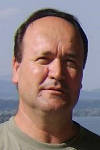
Biography:
Dorian Gorgan is Professor in Computer Science Department of the Technical University of Cluj-Napoca, PhD supervisor in Computers and Information Technology, and coordinator of the Computer Graphics and Interactive System Laboratory (http://users.utcluj.ro/~gorgan). The fields of interest involve parallel and distributed processing over HPC infrastructures such as Grid, Cloud, Multicore, and cluster, development of platforms and applications for spatial data processing and visualization, interdisciplinary research in the domains of Earth Sciences and Earth Observations. He has been involved as scientific coordinator and WP leader in national and international research projects such as BIGEARTH, PECSA, enviroGRIDS, IASON, SEE-GRID-SCI, GiSHEO, mEducator, iTRACE, MedioGrid, COMPLEXHPC, and KEYSTONE. He has been member of scientific and reviewing committees of many ISI journals and international conferences, and gave more than 300 papers and presentations in journals and prestigious conferences in the domains of Computer Science and Earth Observation.
Abstract:
Big Data is a challenge in many fields of research, one important domain being those dealing with Earth Observation (EO) data. The main issues, in this case, are the volume and velocity of data acquired by an increasing number of aerial and space-borne sensors, but as well the complexity of data mining process. Thus, the sheer volume and acquisition rates may threaten to overwhelm many organizational storage capabilities, leading to situations in which data value is overtaken by storage costs, which will, in turn, lead to loss of data. Data can create value only when it is used, and the data protection has to be oriented toward allowing innovation that sometimes depends on creative people, which achieve unexpected valuable results through a flexible and adaptive manner. The users need to describe and experiment themselves different complex algorithms through analytics in order to valorize data. The analytics uses descriptive and predictive models to gain valuable knowledge and information from data analysis.rnrnThe BigEarth platform offers solutions for increasing the efficiency of the data processing efforts by combining two approaches. The first one experiments the high-performance, cloud-based computing solution in order to shorten the overall execution time. The second approach provides a highly flexible description of the data processing tasks in order to improve the modularity of the design and promote reusability.rnrnAs a means of specifying the structure of the workflow, the BigEarth platform uses a specially designed description language called WorDeL (Workflow Description Language). This presentation aims to highlight and exemplify some of the main features of the language, and demonstrate their usage in defining Earth Data processing tasks. The WorDeL language is based on the flexible description of processing tasks as workflows, composed of basic processing operators. With this approach, the language offers an intuitive way of representing processing tasks, without requiring programming expertise from its users. It also allows its users to employ and integrate existing functionality into their design, thereby reducing the complexity and development effort of newly defined processing workflows. The WorDeL language supports the transparent adaptive parallelization of the processing tasks over high performance computation architectures, such as cloud based solutions.rn
Keynote Forum
Balwant Rai
Aeronautical Dentistry Kepler Space institute, USA
Keynote: Human long duration space missions: Space dentistry, Medicine and Space policy
Time : 09:55-10:20
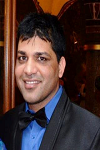
Biography:
Assoc. Professor (Dr) Balwant Rai is founder of Aeronautic Dentistry and has written the curriculum and guidelines for the implementation of this new discipline. He is Program Director and Associate Professor of Aeronautic Dentistry at KSU in the USA. He is also the President and Founder of the JBR Institute of Health Education Research and Technology. Dr. Rai has multiple published articles in international and national journals, has written books, and is Editor-in-Chief of different international journals. He is also founder of the BR formula and BR regression equation used in forensic technology. His current work involves the effect of micro-gravity & simulated space analog environment on the oral cavity, human physiology and psychology and non-invasive biomarkers, including the elaboration of technologies to prevent the adverse effects of microgravity on the human physiology and psychology. His biography has been published in different books such as Who’s Who in Health and Medicine and Who’s Who in the World, USA etc. He is invited Editor of Mars Quarterly. He is an invited reviewer to NRF, South Africa, reviewer of more than 10 different journals, and has different pending patents. He is an invited reviewer of many national and international indexed journals. He is consultant of different companies. He was selected as part of Crew 78 on the Mars Desert Research Station [MDRS] as Health and Safety Officer and appointed as Commander for 100 B crew on MDRS. He is principal investigator cum researcher on a project entitled “simulated space mission and human factors including oral cavity: noninvasive technology and herbal formulation”. Dr. Rai is working on a number of space related research projects and is jury member for different space related programs. He has a strong belief in leaving a mark on space programs using non-invasive diagnostic technologies and herbal formulations.
Abstract:
Space agencies have collected lots of scientific data regarding effects of low earth orbits and microgravity on human body health. Prolonged human space missions will face other additional problems, some still unanswered issues such as effects of different factors ( radiation levels, local environments including atmospheres, dust, gravity, day-night cycles, isolation) on human body. The presentation scrutinizes the major issues of oral and medical health (Space dentistry and space medicine) based on JBR simulated space mission as well as to discuss space policy for planning the future exploration of space.
- Track 01: Space Missions | Track 03: Space exploration | Track 04: Earthquake Engineering | Track 07: Types of Satellites and Applications | Track 10: Aerospace Engineering and Technology | Track 11: Applications of Satellite Technology | Track 13: Climate change and Weather forecasting

Chair
Dorian Gorgan
Technical University of Cluj-Napoca
Romania

Co-Chair
Joseph Seckbach
The Hebrew University of Jerusalem
Israel
Session Introduction
Capt. Abdullah Al Zahrani
Alzahrani Space Innovation
Poland
Title: Revolution of space technology, new idea how we can speed up time travel to planets by using electromagnetic field in space

Biography:
Abdullah Al Zahrani has completed his bachelor degree in aero science from King Fisal Air Academy “KFAA†as a military pilot at the age of 23 serving around 14 years as a pilot in Royal Saudi Air force. He is the founder and CEO of ALZAHRANI SPACE INNOVATION, part of ALZAHRANI INTERNATIONAL HOLDING GROUP SP.Z.O.O, POLAND. Interested in Physics, Astrophysics and Space Science, research in medicine.
Abstract:
Humans have curious minds. The first successful expedition around the earth was undertaken in the 16th century by Ferdinand Magellan. It took them 3 years and 1 month to return home. Nowadays, we can accomplish it in less than 80 hours. The rapid development of technologies and scientific thinking has opened new horizons for exploring the world around us. The humankind has set its ambition on space exploration. Today the estimated time travel to Mars is around 7 – 9 month. It is determined by the characteristics of Earth and Mars orbits as well as technical features of the modern space shuttles. In this speech we would present an innovative approach to think about the space that would introduce how electromagnetic waves can help to speed up the travel to any planet. The idea to use the physical properties of the environment to reduce the energy output for travel is not a new one. Let’s contemplate the possibility of doing this with the space travel. The up-to-date research on warp bubble drive, gravitation waves and electromagnetic energy in space confirms the possibility of such travel. The physical properties of the space shuttle can be accommodated to the outer space in a way that the interaction of both would make the rapid space travel possible. With new technologies and innovations we are taking a step forward to fulfilling the dream of conquering the space. Making a dream a reality.
Mark A. Skinner
The Boeing Company
USA
Title: Current issues in Space Situational Awareness (SSA) and Space Traffic Management (STM)
Time : 10:35-10:55
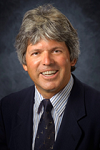
Biography:
Skinner joined Boeing in 1999 (Maui Space Surveillance System). In 2015 he transitioned to Boeing Research & Technology (Albuquerque NM) as a senior scientist and technical manager. Skinner specializes in space object characterization; his current research focus is orbital debris, with an emphasis on debris in GEO. He is currently PM of Boeing’s Commercial ground-based SSA team, supporting Boeing's commercial satellite customers.
Abstract:
The geostationary Earth orbit (GEO) satellite belt is a unique location above the earth affording a continuous line-of-sight to satellite uplink and downlink stations. The volume defined by this belt is large, but available slots are limited. During the last fifty years of the space age, this volume has become more crowded, as humankind has launched more and more satellites into this particular orbital regime, and satellites that suffered incapacitating anomalies and space debris have remained in the belt. The latter pose a hazard since they are uncontrolled, and the only way for satellite operators to avoid collisions with space objects is to maneuver. Knowing when and where to maneuver requires space situational awareness (SSA), but this is just one aspect needed to maintain safety of flight in this very valuable orbital regime. For national and international regulatory agencies, SSA is the key to being able to initiate space traffic management (STM). This paper reports on, from the point of view of an SSA practitioner, what the current key issues and dangers are for SSA and STM, and what the best possible set of near-term actions could be, involving international cooperation (through bodies such as the UN COPUOS), data sharing between actors in the space arena, public and private sector SSA efforts, and nascent research efforts into active space debris removal. Where limited available resources should be applied to affect the best possible outcome for the sustainable use of space?
Balwant Rai
Aeronautical Dentistry
Kepler Space institute
USA
Title: Space simulated missions and space research: Human health
Time : 10:55-11:15
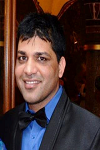
Biography:
Balwant Rai is founder of Aeronautic Dentistry and has written the curriculum and guidelines for the implementation of this new discipline. He is Program Director and Associate Professor of Aeronautic Dentistry at KSU in the USA. He is also the President and Founder of the JBR Institute of Health Education Research and Technology. Dr Rai has multiple published articles in international and national journals, has written books, and is Editor-in-Chief of different international journals. He is also founder of the BR formula and BR regression equation used in forensic technology. His current work involves the effect of micro-gravity & simulated space analog environment on the oral cavity, human physiology and psychology and non-invasive biomarkers, including the elaboration of technologies to prevent the adverse effects of microgravity on the human physiology and psychology. His biography has been published in different books such as Who’s Who in Health and Medicine and Who’s Who in the World, USA etc. He is invited Editor of Mars Quarterly. He is an invited reviewer to NRF, South Africa, reviewer of more than 10 different journals, and has different pending patents. He is an invited reviewer of many national and international indexed journals. He is consultant of different companies. He was selected as part of Crew 78 on the Mars Desert Research Station [MDRS] as Health and Safety Officer and appointed as Commander for 100 B crew on MDRS. He is principal investigator cum researcher on a project entitled “simulated space mission and human factors including oral cavity: noninvasive technology and herbal formulation”. Dr Rai is working on a number of space related research projects and is jury member for different space related programs. He has a strong belief in leaving a mark on space programs using non-invasive diagnostic technologies and herbal formulations.
Abstract:
Simulated space missions are very special environments for doing researches and testing new techniques related to human health which are beneficial to space and on Earth. Simulated space environments are providing best understanding of different aspects of human physiology including oral cavity, sociology and psychology which helps in developing and inventing novel protocols and technologies for monitoring the astronaut’s health. In this key note address, I will discuss our inventions and technologies related to human health in space simulated missions.
Yüksel Altiner
Federal Agency for Cartography and Geodesy in Frankfurt am Main
Germany
Title: Geodetic earthquake forecasting and crustal deformation modeling from point position changes using GPS data
Time : 11:15-11:35
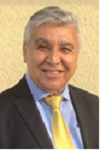
Biography:
Yüksel Altiner has earned his Bachelor of Science degree from the Yildiz Technical University of Istanbul and Master and Doctoral degrees from the University of Bonn. In 1997, he was named a University Docent in Geodesy by the Turkish Interuniversity Committee. He developed an Analytical Surface Deformation Theory, which was published in a book in 1999 and later translated from English into Chinese. Since 1989, he has worked in the Geodesy Division of the Federal Agency for Cartography and Geodesy in Frankfurt am Main, Germany.
Abstract:
We can consider that the Earth is a body represented by single points; energy stored or released due to geotectonic processes then engenders pre-seismic elastic strain and periodic co-seismic waves that shake the ground and change the positions of these points. Point position changes within the CORS-TR network were determined to study pre-seismic, co-seismic, and post-seismic motions of the 23 October 2011 Van, Turkey earthquake applying a variety of processing methods on GPS data. Observed co-seismic surface deformations at the CORS-TR stations were then modelled using a theoretical earthquake source model independent of the seismic observations. This presentation focuses on, from a geodetical point of view, the set of point position changes needed to forecast earthquakes and also discusses Earth’s crustal deformations, as described by the outcomes of the analysis. To emphasize the three dimensional nature of Earth’s crust deformations, this presentation will discuss the proposed investigation of a possible tectonic (plate) boundary in the Adriatic Sea that crosses from Gargona, Italy to Sibenik/Zadar, Croatia. To do so, we will apply analytical surface deformation theory to the annual movements of ground stations in a large geodynamic network along the edges of the Adriatic Sea.
Sunil C Joshi
Nanyang Technological University
Singapore
Title: Characteristics of hypervelocity impact of Micro-particles on multi-foils shield configurations
Time : 11:35-11:55
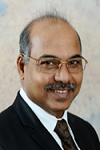
Biography:
Sunil C. Joshi obtained his Ph.D. from Monash University (Australia) and has been a faculty in School of Mechanical & Aerospace Engineering since 2000. His expertise lies in the domain of Aerospace Materials and Structures, especially advanced composites and novel material systems. Dr. Joshi was a member of XSAT, Singapore’s first in-house designed and developed micro-satellites, team, where he served as the team leader for thermal controls sub-system. Besides currently being an Assistant Chair for Graduate Studies, he also chairs School's Aerospace Engineering (AE) accreditation committee that prepares towards accreditation of the BEng (AE) programme.
Abstract:
Numerical investigation is carried out to assess performance of multiple foils shield configurations against hypervelocity micro-particle impact. Micro particle material mainly consists of three materials, namely aluminum, float glass and steel. Further the shield configuration is modelled by aluminum in first bumper foil and Ti-6Al-4V in the second foil. The modeled impact scenario has consistent dimensions in every simulation with the micro-particle diameter, first foil thickness and second foil thickness measuring 47μm, 8μm, 15μm respectively. Numerical investigation of the shield configuration was performed using smooth particle hydrodynamic processor in AUTODYN hydrocodes and material modeling was accomplished using an equation of state with constitutive strength and cumulative damage model. The numerical results accurately depict the DC generation, kinematic and geometrical parameters of the DC, micro-particle condition, and standoff foil condition after the impact. Studies have shown that a two foil shield configuration is capable of restraining micro-particles with mechanical strength similar to float glass and aluminum. Additionally a 1-mm thick Ti-6Al-4V plate has to be added into the shield configuration at 5 mm distance from the second foil to resist the impact of rigid (steel) micro-particles.
Stanislav I Klimov
Russian Academy of Sciences (IKI RAS)
Russia
Title: Implementation of a micro-satellite program in the infrastructure of the Russian segment of the International Space Station
Time : 11:55-12:15

Biography:
Stanislav I Klimov Born on 27 June 1937 in Tula region, Russia. Head of Laboratory for Electro - Magnetic Emissions Investigation, Department of Space Plasma Physics, Space Research Institute (IKI), Russian Academy of Sciences. S. Klimov graduated from Department of Physics, Moscow State University (1966), received Ph.D. of physics-mathematics in 1984, Doctor of Scinces of physics-mathematics in 1994. Now he is the Scientific Manager of ASPI experiment INTERBALL TAIL PROBE and APW-R Relict-2 wave and field experiments and WEC Cluster wave experiment Co-I. The laboratory he leads also includes the electrostatic and magnetic cleanliness and EMC group. Now this group use the experience from the previous projects for the study of the electro-magnetic enviromnent of the MIR orbital station and in the future experiments of the International Space Station. He has more than 100 publications. His research interest includes: Waves in solar wind /magnetospheres and comet plasma interactions, magnetospheric convection and magnetosphere-ionosphere coupling, interaction of the supper large bodies (orbital station) with ionosphere.
Abstract:
JSC "RSC "Energia" and SRI RAS as part of the "Long-term program of scientific-applied researches and experiments on the ISS RS", in accordance with the decision of the Coordinating Scientific and Technical Council (KNTS) of the Federal Space Agency for programs of scientific and applied research and experiments on manned space complexes, the first in the world implemented the "dual-launch" with transport cargo vehicle (TGC) the "Progress" and the ISS RS. In accordance with this technology the microsatellites composed of other TGC goods are delivered to the ISS RS, and then after performing the TGC primary function for the delivery of goods, is re-starting the engines of the "Progress" and he brings the microsatellite to a higher orbit (500 km). This scheme increases the economic efficiency of associated output for the TGC microsatellites weighing up to 100 kg and increases the ballistic time of their existence no less than 5 times. The introduction of this technology opens up wide prospects for fundamental space research and the Russian universities the possibility of launching their own satellites for scientific and educational purposes. The paper presents the experience of implementing this technology at the launch of the scientific micro-satellite "Chibis-M" (mass 40 kg), established the Russian Academy of Sciences to conduct a comprehensive space experiment (SE) on the study of energy of high-altitude lightning discharges in a wide range of electromagnetic radiation. At present in IKI in preparation are similar to the tasks of the SE on the microsatellite "Chibis-AI" and "Trabant" (2019-2021), included in the Program of scientific and applied research on the ISS RS.
Donglian Sun
George Mason University
USA
Title: Automatic Near-Real-Time flood detection using Suomi-NPP/VIIRS Data

Biography:
Donglian Sun is an Associate Professor in Department of Geography and Geo-information Science, George Mason University, USA. She has completed her Ph.D. in University of Maryland, USA. She is expertise in Numerical Weather Prediction, Remote Sensing, Meteorology and Climate, Severe Weather, Earth Observing Techniques and Methods. She has published several research articles in national and International journals.
Abstract:
Near real-time satellite-derived flood maps are invaluable to river forecasters and decision-makers for disaster monitoring and relief efforts. With the support from the JPSS (Joint-Polar Satellite System) Proving Ground and Risk Reduction Program (JPSS/PGRR), a flood detection package has been developed using SNPP/VIIRS (Suomi National Polar-orbiting Partnership/ Visible Infrared Imaging Radiometer Suite) imagery to generate daily near real-time flood maps automatically for National Weather Service (NWS)-River Forecast Centers (RFC) in the USA. In this package, a series of algorithms have been developed including water detection, cloud shadow removal, terrain shadow removal, minor flood detection, water fraction retrieval and flooding water determination. The package has been running routinely with the direct broadcast SNPP/VIIRS data since 2014. Flood maps were carefully evaluated by river forecasters using airborne imagery and hydraulic observations. Offline validation was also made via visual inspection with VIIRS false-color composite images on more than 10,000 granules across a variety of scenes and comparison with river gauge observations year-round and NOAA flood outlook and warning products. Evaluation of the product has shown high accuracy, and the promising performance of the package has won positive feedback and recognition from end-users.
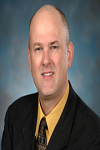
Biography:
Donald C. Barker, holds Masters Degrees in Physics, Mathematics, Psychology and Space Architecture, and is currently pursuing a Ph.D. in Planetary Geology from the University of Houston. Mr. Barker has held several positions over the past twenty years supporting the U.S. space program at Johnson Space Center including: Biomedical Engineer, Flight Controller, Systems Engineer (ISS Robotics, Crew Health Care, GNC-Propulsion & Operations Planning) and ISS Program Scientist. Mr. Barker is a Certified Flight Instructor and avid mountaineer (Colorado 14’ers, Mt. Fuji, Mt. Aconcagua, and Kilimanjaro). Research interests include lunar and Mars science and exploration mission design and architectures.
Abstract:
Humanity, within only the past 40 years, has traversed a unique technological threshold of self-enabled survival, a first in the history of life on Earth. Given current knowledge regarding potential locations in our solar system, Mars is the only neighboring world replete with the needed resources, primarily water, which can rapidly and permanently sustain human settlement. Given our imperfect understanding and tenuous control over changes to Earth’s environments and ecosystems, as well as our own population and behaviors, an ever-growing likelihood exists that an event or series of events could rapidly induce social collapse or possible extinction of our species. Prior to our recently gained technological capabilities, life on earth subsisted at the mercy of natural events, known or unknown. These same technological advances, over the past 75 years, have empowered humanity to suffer self-induced catastrophes. Such knowledge necessitates the immediate self-initiated diversification off Earth. Despite increasing financial constraints and decreased population attention-spans, the sedulous pursuit of settling humans on Mars should be our species highest imperative. It is the technological threshold of enabling interplanetary travel and habitation of other worlds that has the potential to reset humanities survival clock. Meanwhile in hindsight, as the clock ticks away, we entertain a thought experiment highlighting what might have occurred had NASA’s budget been radically different over the past fifty years. In addition to survival, concrete home world benefits in education and inspiration also exist, and the initial act of settling Mars will uniquely serve as humanities greatest globally inspiring self-initiated achievement.
Madhulika Guhathakurta
NASA-Science Mission Directorate
USA
Title: STEREO as a “Planetary Hazards†mission

Biography:
Madhulika Guhathakurta is the Lead Scientist for the Living with a Star Program at the National Aeronautics and Atmospheric Administration headquarters in Washington, D.C. LWS focuses on understanding and ultimately predicting solar variability and its diverse effects on Earth, human technology and astronauts in space. She has worked as an Educator, Scientist, and Mission Designer; has directed and managed science programs; has built instruments for spacecraft; and has authored over 70 publications. A native of India, She has a Master's degree in Astrophysics from the University of Delhi and a PhD degree in Physics from the University of Denver and the University of Colorado at Boulder.
Abstract:
NASA’s twin STEREO probes, launched in 2006, have advanced the art and science of space weather forecasting more than any other spacecraft or solar observatory. By surrounding the Sun, they provide previously-impossible early warnings of threats approaching Earth as they develop on the solar far side. They have also revealed the 3D shape and inner structure of CMEs—massive solar storms that can trigger geomagnetic storms when they collide with Earth. This improves the ability of forecasters to anticipate the timing and severity of such events. Moreover, the unique capability of STEREO to track CMEs in three dimensions allows forecasters to make predictions for other planets, giving rise to the possibility of interplanetary space weather forecasting too. As human activity expands into the solar system, the need for accurate space weather and space climate forecasting is expanding, too. Space probes are now orbiting or en route for flybys of Mercury, Venus, Earth and the Moon, Mars, Vesta, Ceres, Saturn, and Pluto. Agencies around the World are preparing to send robotic spacecraft into interplanetary space. Each of these missions (plus others on the drawing board) has a unique need to know when a solar storm will pass through its corner of space or how the subsequent solar cycle will behave. Ultimately, astronauts will follow, traveling beyond Earth orbit, and their need for interplanetary space weather and climate forecasting will be even more compelling. STEREO is one of those rare missions for which “planetary hazards†refers to more than one World. The STEREO probes also hold promise for the study of comets and potentially hazardous asteroids.
Snezana Mitrovic Minic
Simon Fraser University
Canada
Title: Mission Operations Optimization: Is Capital Investment Needed to Increase Throughputs and Profits?

Biography:
Snezana Mitrovic Minic is a Senior Research Analyst at MDA Systems and an Adjunct Professor in Department of Mathematics, Simon Fraser University, Surrey, Canada. She has completed her PhD in School of Computing Science, Simon Fraser University, Columbia, and MSc at Faculty of Electrical Engineering, University of Belgrade, Serbia, and BSc in Faculty of Mathematics, University of Belgrade, Serbia. Her research interests include Operations Research, Satellite Mission Operations, Optimization, Decision Support, Resource Management and Utilization, Logistics, Vehicle Routing, Planning and Scheduling.
Abstract:
Maximization of resource utilization in satellite industry can be achieved through application of Operations Research and Optimization methodologies. More than 25% percent increase may be reachable even without capital investment. This talk presents two scheduling problems arising in Satellite Mission Operations. Planning and image acquisition scheduling for an outward-looking satellite that monitor’s resident space object and space debris is a complex optimization problem. With several hundred thousands of pieces of space debris in the Earth orbits, tracking the debris for advanced planning of satellite Manoeuvres to avoid collisions is becoming very important. The other planning problem deals with rapid scheduling performed on-board optical satellite that could provide enhanced and more accurate cloud avoidance in image acquisitions. Scheduling problems in satellite industry are characterized with rich set of constraints and complex optimization cost functions and may be called rich scheduling problems. State-of-the art optimization methodologies including metaheuristics provide means of generating close-to-optimal solutions in a reasonable time and within realistic operational scenarios. Similar methodologies have potential to increase throughput of communication satellites and provide better service for larger number of high priority customers.
Balwant Rai
JBR Heath Education and Research Society
USA
Title: Human long duration space missions: Space dentistry, Medicine and Space policy
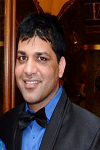
Biography:
Assoc. Professor (Dr) Balwant Rai is founder of Aeronautic Dentistry and has written the curriculum and guidelines for the implementation of this new discipline. He is Program Director and Associate Professor of Aeronautic Dentistry at KSU in the USA. He is also the President and Founder of the JBR Institute of Health Education Research and Technology. Dr Rai has multiple published articles in international and national journals, has written books, and is Editor-in-Chief of different international journals. He is also founder of the BR formula and BR regression equation used in forensic technology. His current work involves the effect of micro-gravity & simulated space analog environment on the oral cavity, human physiology and psychology and non-invasive biomarkers, including the elaboration of technologies to prevent the adverse effects of microgravity on the human physiology and psychology. His biography has been published in different books such as Who’s Who in Health and Medicine and Who’s Who in the World, USA etc. He is invited Editor of Mars Quarterly. He is an invited reviewer to NRF, South Africa, reviewer of more than 10 different journals, and has different pending patents. He is an invited reviewer of many national and international indexed journals. He is consultant of different companies. He was selected as part of Crew 78 on the Mars Desert Research Station [MDRS] as Health and Safety Officer and appointed as Commander for 100 B crew on MDRS. He is principal investigator cum researcher on a project entitled “simulated space mission and human factors including oral cavity: noninvasive technology and herbal formulationâ€. Dr Rai is working on a number of space related research projects and is jury member for different space related programs. He has a strong belief in leaving a mark on space programs using non-invasive diagnostic technologies and herbal formulations.
Abstract:
Space agencies have collected lots of scientific data regarding effects of low earth orbits and microgravity on human body health. Prolonged human space missions will face other additional problems, some still unanswered issues such as effects of different factors ( radiation levels, local environments including atmospheres, dust, gravity, day-night cycles, isolation) on human body. The presentation scrutinizes the major issues of oral and medical health (Space dentistry and space medicine) based on JBR simulated space mission as well as to discuss space policy for planning the future exploration of space.
Khrenov Boris
Moscow State University
Russia
Title: UV radiation from the atmosphere: Results of the MSU satellites measurements

Biography:
Boris Khrenov, MS., Ph.D., D.Sc. in Physics and Mathematics. Honorary Researcher. Leading Staff Researcher, Skobeltsyn Institute of Nuclear Physics (SINP) of Lomonosov Moscow State University (MSU), Moscow, Russia. Boris Born on 30 June 1931 in Sankt-Petersburg, Russia (then Leningrad, USSR). He Graduated MSU in 1954, and PhD “High energy muons in EAS†in the year 1962. Doctor of Sciences (D.Sc.), Prof. in Physics and Mathematics, “Experimental study of EAS high energy muons by underground magnetic spectrometerâ€, in 1987.
Abstract:
Moscow State University had launched several scientific- educational micro satellites «Tatiana», «Tatiana-2» and «Vernov» with one of the tasks- a search of near UV glow of the atmosphere. Short review of their results will be presented. In 2016, as a continuation of the previous work on study of the transient atmosphere glow in near UV, new satellite «Lomonosov» expected to be launched. Large aperture telescope TUS on board this satellite is able to measure atmosphere fluorescence radiated by different transient sources in the Earth atmosphere. The shortest signals (tens of microseconds) are expected from extensive air showers generated by ultra high energy cosmic rays. Electronics of TUS starts to measure images of this phenomenon with time resolution 0.8 microseconds. Longer (up to seconds) signals are expected from atmosphere electric discharges, from dust grains and meteoroids burned out in the atmosphere. Data on the atmosphere ultraviolet transients initiated by electric discharges are of special interest.
Daniel Casanova Ortega
University of Zaragoza
Spain
Title: Analytical method for space debris propagation under perturbations in the geostationary ring
Time : 12:15-12:35
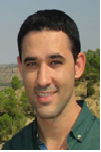
Biography:
Daniel Casanova Ortega completed his PhD in 2013 from University of Zaragoza (Spain) and Post-doctoral studies from University of Namur (Belgium). His main fields of interest on Astrodynamics are Satellite Constellations and Space Debris. He is an Assistant Professor at the University Center of Defense, affiliated with the University of Zaragoza (Spain). He has published more than 10 scientific papers. He is an active researcher in several R+D projects.
Abstract:
Space debris has become a real problem in the last decades. The quantity of space debris fragments orbiting the Earth with no control has increased exponentially. The risk of collision between spacecraft and space debris larger than 10 cm is avoided by spacecraft maneuvering. However, collision with small space debris fragments is impossible to avoid causing important damages to spacecraft. Consequently, different space debris propagation methods are required, not only to know the fragments precise position but also the statistical evolution of the space debris clouds. For this purpose, in collaboration with Prof. Anne Lemaitre and Alexis Petit from the University of Namur, an analytical method for propagating space debris in the geostationary ring considering different perturbations such as the J2 effect due to the Earth oblateness, the solar radiation pressure, or the Sun and Moon perturbations as third bodies have been developed. The Hamiltonian formulation of the problem and the use of different averaging technics have allowed the development of a powerful analytical method. The analytical model has been validated with numerical tests through different examples to confirm the reliability and accuracy of our method. The inclination period has also been analyzed as a function of the area to mass ratio. The final idea of this work is to apply this method to propagate a synthetic population of space debris.
Massimo Materassi
Institute for Complex Systems of the National Research Council
Italy
Title: Dealing with the Earth’s ionosphere’s complexity
Time : 12:35-12:55
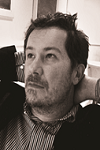
Biography:
Massimo Materassi has completed his PhD at the age of 30 years from Perugia University and postdoctoral studies from Space Research Centre in Warsaw. He is the Italian Representative in the Commission G “Ionospheric Radio and Propagation” of the International Union of Radio Science (URSI). He has published more than 30 papers in reputed journals and has been serving as a referee in different journals. His research is about both applied Physics (ionospheric physics and space weather, ecological models) and pure Physics (fundaments of dissipation).
Abstract:
The Earth’s ionosphere is a composite system of several charged chemicals, both ions and electrons, dynamically conditioned by the important ionizing factors determining its existence, and by the forces exerted on them: in particular, the solar UV radiation (main ionizing factor) and the forces due to the geomagnetic field, gravity and the massive neutral matter containing them. Hence, ionospheric time and space variability is essentially driven by the concurrence of all these forcing factors, imprinting ionosphere’s tempos with their ones. The characteristic times of the Sun-Earth relative kinematics and geometry are recognizable in the ionospheric variability, but these forcing factors do not just superimpose, and give rather rise to a complicated non-linear composition of causes into ionospheric effects. This non-linear composition results in a complex behavior both in terms of space structures and time evolution: indeed, on the one hand large scale ionospheric patterns evolve on a quasi-periodic basis, as those systems following strange trajectories in their phase space; on the other hand, local ionospheric proxies (fields, velocities and densities) are irregular, resembling rather turbulent signals than smooth profiles. In few words, this all is ionospheric complexity. Ionospheric complexity must be deal with in modeling ionospheric effects on positioning, navigation, telecommunication. In this talk, aspects of ionospheric modeling centered on taking into account complexity will be discussed.
Oleg Troshichev
Arctic and Antarctic Research Institute
Russia
Title: РС index as a ground-based proxy of the solar wind energy incoming into the magnetoshere: means for space weather monitoring
Time : 13:35-13:55
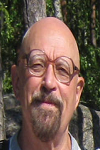
Biography:
Oleg Troshichev graduated from Leningrad University, USSR. He has completed his PhD in physics at the Siberian Institute of Earth Magnetism, Ionosphere, and Radiowave Propagation (SibIZMIR, Irkutsk, 1969). He takes charge of Department of Geophysics in AARI from 1985. The main subject of his investigations is physics of the Earth’s magnetosphere and solar-terrestrial relations. Prof. Oleg Troshichev is author of the polar cap magnetic activity (PC) index that has been endorsed by the IAGA (2013) as a proxy of the solar wind energy that entered into the magnetosphere. He has published more than 250 papers in reputed journals.
Abstract:
The space weather monitoring basically rests on of the solar wind measurements outside of the magnetosphere. The ground-based index of the polar cap magnetic activity (PC) is regarded as index characterizing the energy that entered into the magnetosphere. The following relationships between the PC-index and the solar wind parameters, on the one hand, and relations between the PC evolution and the magnetospheric substorms (AL index) and magnetic storms (Dst index) development, on the other hand, provide this concept: (1) the PC index is perfectly correlates with the interplanetary electric field (EKL), (2) delay time ΔT in response of PC index to EKL variations is controlled by the EKL field growth rate (dEKL/dt) and does not depend on such solar wind parameters, as solar wind speed VX and IMF BZ component, (3) magnetic storms and substorms are always preceded and accompanied by РС index growth, (4) substorms and magnetic storms start to develop as soon as the PC index steadily exceeds the threshold level of 1.5 mV/m, (5) the substorm sudden onsets are commonly associated with a sharp increase in the PC (and EKL) growth rate, (6) linear correlation between the PC and AL values is typical for all classes of the substorms, (7) maximal depression of magnetic field responds to maximal PC value with a delay of ~1 hour, the storm intensity (Dstmin) being linearly depending on PCmax value. The PC index can be used as a reliable ground-based means for exploration of short-term changes in space weather and magnetosphere state.
Chan Kheong Sann
Data Storage Institute (DSI)
Singapore
Title: Joint Viterbi Detector/Decoder for satellite communications
Time : 13:55-14:15

Biography:
Chan Kheong Sann obtained his bachelor's degree from Northwestern University, Illinois and his PhD from National University of Singapore in Electrical Engineering. He has been working at the Data Storage Institute, a Singapore government A*STAR reearch institute for 16 years and is currently the leader of the coding and signal processing team. One of the projects he is currently leading is an NRF funded project from the Singapore government investigating the JVDD for satellite communications.
Abstract:
Satellite broadband communication today uses the DVB-S2 second generation standard proposed and developed through the DVB consortium project in 2003. The DVB-S2 standard uses a combination of a forward error correction (FEC) with multiple code rates, and multiple modulation modes giving a range of spectrum efficiencies ranging from 0.5 to 4.5 bits per transmitted symbol. The FEC scheme used is a combination of BCH and LDPC codes with combined code rates of ¼, 1/3, 2/5, ½, 3/5, 2/3, ¾, 4/5, 5/6, 8/9 and 9/10. The modulation schemes on the other hand could be one of QPSK, 8PSK, 16APSK or 32APSK for each frame. The Joint Viterbi Detector/Decoder (JVDD) is a recently proposed scheme that performs detection and decoding jointly over an encoded ISI base-band channel, and is a competitor to the LDPC decoder operating over the same channel. Alternatively, the ISI channel can be replaced by a modulation scheme that does encoding and modulation prior to the transmission, as in the case of the DVB-S2 standard. This makes the JVDD a candidate for replacing the demodulator and decoder in a DVB-S2 receiver. Previous work over an AWGN/ISI channel has seen the JVDD outperforming the LDPC decoder at shorter codeword lengths. In this work we present simulation results benchmarking the JVDD against the LDPC iterative decoding scheme at the range of code rates and modulation schemes used in the DVB-S2 standard.
Joseph Seckbach
The Hebrew University of Jerusalem
Israel
Title: From extremophilic microbes to extraterrestrial possibilities of life
Time : 14:15-14:35
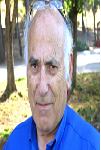
Biography:
Joseph Seckbach is the Founder and Editor-in-Chief of Cellular Origins, Life in Extreme Habitats and Astrobiology Seroes. He earned his PhD from University of Chicago and did a Post-doctorate at Caltech, then headed a group at UCLA studying extraterrestrial life possibilities. Later, he was appointed to the Hebrew University and spent sabbaticals at UCLA and Harvard. During 1997-98, he served at LSU, Baton Rouge, as the first selected Chair for the Louisiana Sea Grant. He published ~140 scientific articles including Hebrew-language Chemistry Lexicon. His interest is over enigmatic microorganisms, life in extreme environments and astrobiology. He has given seminars at numerous universities.
Abstract:
We know life all over in ‘normal’ environments with mild habitable conditions. However, there are also habitats on Earth that have very severe environmental conditions that host microorganisms. The organisms living and thriving in these harsh conditions are termed Extremophiles. While these environments are considered harsh and severe environments from our anthropocentric point of view, the extremophiles consider their environment as a Garden of Eden. Most of them are not able to live in ‘normal’ environments, which are toxic for them. Among the organisms in these harsh habitats, one can find prokaryotes such as Cyanobacteria and eukaryotes such as algal species and even micro-animals (such as Tardigrates). If extremophiles tolerate more than one extreme factor, we call them Polyextremophiles. Among these extreme conditions are high salt media (halophiles), high levels of temperatures (thermophiles or hyperthermophiles) or very low temperatures (psychrophilic, hyperthermophiles), and various pH levels (in the low pH range are the acidophilic; in high levels – alkalophilic). The extremophiles and polyextremophiles could serve as analogues or models for astrobiology. We are aware that the planet Mars contains liquid water, and several satellites have in their subsurface (icy layers) an ocean of salty liquid water. There are plans to send a human mission to Mars around the year 2030 and have it return with some extraterrestrial samples which would inform our view on the possibilities of external life (as “we know it”).
Oyvind G Gron
Oslo and Akershus University
Norway
Title: How to talk about Einstein’s general theory of relativity?
Time : 14:35-14:55
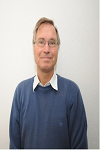
Biography:
Oyvind G Gron is a Norwegian Physicist. He took the Cand. Real. Degree at the University of Oslo in 1973, majoring in Meteorology. He followed up with Dr. Philos. Degree in 1990 with a thesis on Repulsive Gravitation. He was appointed as a Professor at Oslo University College in 1994. He has also been Professor II at the University of Oslo since 1994. He has conducted research within the areas of general relativity, cosmology and classical electromagnetism. He has thrown new light on themes like the twin paradox, the physics in a rotating reference system and repulsive gravitation associated with vacuum energy. Together with Erik Eriksen at the University of Oslo, he has also studied properties of the electromagnetic field produced by accelerated electric charges. They have in particular shown how gravitation modifies such fields. He has also found new solutions to equations in Einstein's theory of gravity that describe time space where one can travel backwards in time. In several studies, he has focused on relativistic models of the universe. He has, among other things, shown that it is possible to interpret observations from cosmos so that the concept of dark energy is unnecessary. The relationship between gravitation and time and between gravitation and entropy are also themes where he has contributed several journal articles. He has 153 research articles, and has written 3 books on the theory of relativity published by Springer.
Abstract:
I will here review the main conceptual contents of the theory of relativity in a non-mathematical way as far as possible. We start by the principle of equivalence and then go on to discuss the possibility of extending the principle of relativity to accelerated and particularly rotating motion. The significance of the phenomenon of inertial dragging in this connection is pointed out. Then we discuss whether there is any connection between experiencing acceleration of gravity and the curvature of space time. The next topic is how to obtain a proper understanding of the strange property of a classical black hole that nothing can come out of it. We point out the significance of the so called “river of space” in this connection. Finally we discuss the phenomenon of repulsive gravitation and the difference between Einstein’s interpretation of the cosmological constant and it modern interpretation.
Maffione Porzia Federica
Politecnico di Torino
Italy
Title: Analysis of launch opportunity for low-thrust interplanetary missions
Time : 14:55-15:15

Biography:
Porzia Federica Maffione completed her Master’s degree in Mechatronic Engineering from Polytechnic of Turin. Her project thesis was on space propulsion for human spaceflight with VASIMR and the aim of this project was to study the optimization problem with indirect method. Currently, she is doing PhD at Polytechnic of Turin and her research is about interplanetary missions design for NEP and SEP. Her first publications are on optimal low-thrust trajectories.
Abstract:
Interplanetary missions are strictly dependent on the launch opportunity. Mission planning requires a knowledge not only of the technological and cost constraints but also the study of the influence of the launch opportunity on the spacecraft performance and on the feasibility of the mission itself. Porkchop plots are very effective tools to design an interplanetary mission, providing a graphical and optimized overview of the relationship between the fundamental parameters of the mission design: the launch date, the duration and the energy. In this way it is possible to evaluate the best region to accomplish the mission under current constraints. Porkchop plots in their usual implementation are, however, applicable only to impulsive (chemical or NTP) propulsion. In this paper an interplanetary mission from Earth to Mars is analyzed, comparing plots similar to porkchop plots, but obtained for low thrust, NEP and SEP. As a first approximation, the orbits of the two planets are considered as coplanar and circular. Then, using the ephemerides, elliptical and non coplanar orbits are taken into account and the “ideal” plots are compared with the actual ones, referred to a particular launch opportunity. Finally, some numerical examples are carried out.
Moisés Meza Pariona
State University of Ponta Grossa
Brazil
Title: Electrochemical behavior in acidic medium of Al–2.0 wt. %Fe aerospace alloy treated by laser surface remelting
Time : 15:30-15:50

Biography:
Moisés Meza Pariona is an Associate Professor in the Department of materials engineering at State University of Ponta Grossa, Brazil. He is the supervisor of undergraduate students and master's degrees. His eduactional deatils are: Degree in physics, Master, doctorate and post doctorate in engineering and materials science. Work in research recast aluminum alloys with laser, characterized by different techniques: optical microscopy, SEM, micro hardness, x-rays, atomic force, corrosion and electrochemical impedance, etc. Finite element simulation of casting and solidification process of alloys. Several projects with various universities. He has published several research articles in national and international Journals.
Abstract:
In this research we carried out a study of the corrosion of Al–2.0 wt. %Fe alloy treated by laser surface remelting (LSR) and was compared with untreated samples (substrate). In this research LSR without protective coating with a 2 kW Yb-fiber laser (IPG YLR- 2000S) was used. Therefore, corrosion potential testing, micro and macro polarization, cyclic voltammetry and electrochemical impedance spectroscopy (EIS) were performed. The morphological and chemical characterizations of the base material (substrate) and of the material treated by LSR were made using a scanning electron microscope and optical microscopy. The results showed that the laser surface treatment effected the Al–2.0 wt. %Fe alloy leads to the formation of a structure with more compact, homogeneous and fine microstructure. Furthermore, with increased surface hardness, roughness reduction, corrosion rates was approximately 10 times smaller when compared with the untreated alloy in the aerated media 25ºC and solution of H2SO4 0.1 mol/L The resistance polarization measures the charge transfer at the interface electrode/solution and similar results were found in both experiments carried out by the techniques polarization curves which involves determining the Tafel constant and by the EIE technique, and the treated sample by LSR showed about 11 times greater than the untreated material. By the electrochemical impedance technique was possible to evaluate the oxide layer formed on the surface of Al–2.0 wt. %Fe alloy treated by LSR, as a protective film against corrosion of this alloy treated by LSR in the middle of H2SO4 0.1 mol/L compared with not treated alloy. In equilibrium conditions the sampled treated showed high capacitive effect in relation to the untreated sample at higher frequencies. In both samples also presented the inductive effect at low frequencies and it is much more noticeable in the treated sample that the untreated sample.
Alberto Gallina
AGH University of Science and Technology
Poland
Title: Analysis of (soft) soil parameter uncertainty in planetary rover mobility simulations
Time : 15:50-16:10
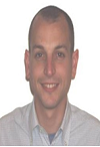
Biography:
Alberto Gallina has completed his PhD from AGH University of Science and Technology in Krakow where he is currently Assistant Professor and teaching subjects like Mechanics and Uncertainty Analysis. He took part in several research projects on the same topics. He had been a 15-month guest scientist in the DLR – Institute of Robotics and Mechatronics where he joined the ExoMars project. He is author of 10 papers in reputed journals.
Abstract:
A crucial aspect in planetary exploration is connected with the mobility of planetary rovers on sandy terrain largely present on the Moon and Mars surface. Travelling on soft terrain rovers may experience very high sinkage, which significantly reduces vehicle mobility. In order to reduce the risk of burying a rover’s wheel into a sandy terrain, extensive experimental and numerical analyses have been conducted. Several simulation frameworks for predicting the rover behavior on soft terrain through dedicated computer models have also been developed by research institutes. In this context, semi-empirical formulations of wheel-soil contact models based on the so called Bekker-theory have been advocated. They ensure a good compromise between model accuracy and simulation time. However, Bekker-based contact models need the estimate of a set of terrain parameters by dedicated laboratory tests. But large uncertainty always affects the soil parameters identification step. It mainly appears as the impossibility to exactly reproduce under laboratory conditions of the soil where the rover travels on. This lack of knowledge may strongly limit the rover behavior prediction capabilities of computer models. In this work different numerical frameworks are presented for uncertainty treatment in wheel-soil contact models based on Bekker’s theory. Polynomial chaos, fuzzy method and Bayesian approach are employed to propagate soil parameter uncertainty through the model for assessing possible predicted rover paths. Results from the analysis is presented and extensively commented.
Erwin De Donder
Royal Belgian Institute for Space Aeronomy
Belgium
Title: Services for space missions support within the ESA space situational awareness space weather service network
Time : 16:10-16:30

Biography:
Erwin De Donder has completed his PhD in Astrophysics within the field of close binary star evolution and galactic chemical evolution. Currently working as scientist at the Royal Belgian Institute for Space Aeronomy within the Space Weather section. Profound experience in developing services related to space radiation and effects on spacecraft’s (e.g. SPENVIS). Responsible for the end-user strategy within the frame of the current development of ESA’s Space Situational Awareness Space Weather Service Network.
Abstract:
Spacecraft operations are by nature complex and every satellite's operational environment poses a range of potential risks, often a unique combination for a given orbit. The implications of interruptions of operations, data transfer and service provision, are serious, both in terms of cost and capability, thus it is imperative to mitigate against all operational risks to the fullest possible extent. In the frame of its Space Situational Awareness (SSA) programme, the European Space Agency (ESA) is establishing a Space Weather Service Network to support end-users, in a wide range of affected sectors, in mitigating the effects of space weather on their systems, reducing costs and improving reliability. This service network is currently in a test and validation phase and encourages user engagement and feedback. Currently, the network is organised around five Expert Service Centers (ESCs) focusing on Solar Weather, Heliospheric Weather, Space Radiation Environment, Ionospheric Weather and Geomagnetic Conditions. Each ESC is connecting different expert groups, federating their space weather products, and ensuring the quality and consistency of the provided information. The service network also includes a central Data Centre and the SSA Space weather Coordination Centre (SSCC). In this presentation we give an overview of the current status of the network (http://swe.ssa.esa.int/), the targeted end-user groups and Expert Service Centers with a focus on the user domain of spacecraft operators. We are also keen to gather feedback and requirements from end-users in order to improve the network support capabilities and to tailor its services.
Mohamed Mhmod
Jilin University
China
Title: Monitor and study horizontal and verticals changes at land surface using remote sensing and gis technology
Time : 16:30-16:50
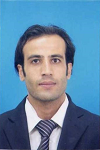
Biography:
Mohamed Mhmod is a PHD student and going to completed his PhD in june 2016 from Jilin University, China. He has published 4 papers in reputed journals. His international experience includes various programs, contributions and participation in different countries for diverse fields of study.
Abstract:
In recent years, remote sensing and geographic information systems and other technology rapid development and wide application of Land has become an effective means of status and temporal evolution of the process, providing a dynamic information environment is difficult to obtain conventional methods to solve complex spatial problems for the conduct of regional dynamic monitoring provides favorable conditions. The satellite images were used from 1974-1976 land sat-1,2, 1989-1996 land sat-4,1999-2005 land sat -7, Google earth images 2005-2008 during period of time for this study , Geomorphic features are extracted from the Shuttle Radar Topography Mission (SRTM) DEM data 2002 and 2010, SRTM DEM and Land sat data were used to extract the geo morphometric Features and structures. The relationship between the topography and tectonics is assessed to understand the evolution mode.
Alexander M Krot
United Institute of Informatics Problems of National Academy of Sciences
Belarus
Title: Development of the statistical theory of forming cosmogonical bodies to explain a stability of the orbital movements of planets and the forms of planetary orbits
Time : 16:50-17:10
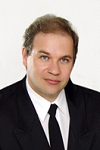
Biography:
Professor, DSc Alexander M. Krot is a Head of the Laboratory of Self-Organization System Modeling at the United Institute of Informatics Problems of the National Academy of Sciences of Belarus. He graduated from the Belarusian State University, Department of Radiophysics in 1982. He received PhD in 1985, then degree of Doctor of Sciences (DSc) in 1991 and Professor degree in 1997. He has published 275 scientific works including 3 monographs and more than 60 articles in refereed journals.
Abstract:
This work investigates the stability and forms of planetary orbits in exoplanetary systems based on a statistical theory of forming cosmogonical bodies. We show that knowledge of some orbital characteristics of multi-planet extrasolar systems refines the knowledge of the parameters of the stars based on the combined Kepler’s 3rd law with universal stellar law (3KL-USL). The proposed 3KL-USL predicts statistical oscillations of circular motion of planets around stars. This work applies the statistical theory of forming cosmogonical bodies based on model of gravitating spheroidal body to explore forms of planetary orbits with regard to Alfvén–Arrhenius’ oscillating forces in the Solar system as well as other exoplanetary systems. Unlike the traditional approaches we show that due to the Alfvén–Arrhenius’ oscillating force mainly the bodies moving in a remote zone of a spheroidal body have elliptic and inclined trajectories. We explain an origin of Alfvén–Arrhenius’ radial and axial oscillations modifying forms of planetary orbits within the framework of the statistical theory of forming cosmogonical bodies. We find that temporal deviation of the gravitational compression function of a spherically symmetric spheroidal body (under the condition of mechanical quasiequilibrium) induces an additional periodic force. In turn, as shown here if the additional periodic force becomes counterbalance to the gravitational force then the principle of an anchoring mechanism is realized in exoplanetary systems, i.e. the stability of planetary orbits occurs. We also note that the spatial deviation of the gravitational potential of a rotating spheroidal body from a spherically symmetric one implies a difference in the values of the radial and the axial orbital oscillations (even in the case of its mechanical equilibrium), therefore the interference of these orbital oscillations can lead to the nonuniform rotation of stellar layers at different latitudes of star.
Sathish Ayyappa
University of Agricultural Sciences, Bangalore
India
Title: Geospatial approaches for micro level farm planning - A step to enhance crop productivity
Time : 17:25-17:45

Biography:
Sathish Ayyappa has completed his PhD from University of Agricultural Sciences, Bengaluru, India by securing University Gold Medal. He is presently working as Soil Physicist at All India Co-ordinated Research Project for Dryland Agriculture, University of Agricultural Sciences, Bengaluru in India. He has published more than 20 papers in reputed journals. He is the recipient of Vasant Rao Naik National award for best Dryland Research in India during 2014-15. He is guiding students in Master’s degree programme in Soil Science at the University. He is also working in two international projects.
Abstract:
Soil and water are the most important natural resource required for crop production. Its inventory, characterization, and suitability assessment for crops is essential for conserving these natural resources and enhance crop productivity. An attempt is made to provide micro level farm planning at 1:10,000 scale using geospatial approaches in Honnenahalli micro- watershed located at 75o 54’ 54.24’’ East longitude and 14o 35’ 96’’ North latitude in Karnataka, India. The detailed land resource inventory facilitated is arriving at 29 management units in 963 hectares of micro watershed. The fertility status was also assessed using standard procedures for estimation of nutrients. Soil and water resource were assessed and mapped using Remote Sensing, GPS and GIS techniques. Land suitability for major crops (Maize, paddy, Custard apple, Lime, etc) was assessed and land capability classification was worked out. The final management plan in terms of soil and water conservation measures (contour bunding, conservation furrow, inter bund management, farm pond, etc.), soil health management (suitable amendments for soil amelioration, fertilizer recommendation for crops based on soil test results) and crop planning (crops and suitable cropping systems with varieties for agriculture, horticulture and forest component and sowing time) was provided for micro level planning by the implementing agency. The adoption of management plan would enable in changing crops and cropping system based on scientific data and enhances agricultural productivity and livelihood security.
Yasser A. Abdel-Hadi
National Research Institute of Astronomy and Geophysics (NRIAG)
Egypt
Title: Space-Based Solar Laser System Simulation to Transfer Power onto the Earth
Time : 17:45-18:05
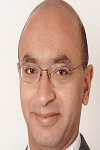
Biography:
Yasser A. Abdel-Hadi has completed his Ph.D. in 2005 from the Technical University of Berlin, Institute of Optics and Atomic Physics. He is an Associate Professor and staff member at the Solar and Space Research Department of the National Research Institute of Astronomy and Geophysics (NRIAG). He has published more than 38 papers in reputed journals and has been organized many conferences and workshops in Egypt and Germany.
Abstract:
A simulation model of a space-based solar laser system to transfer the power onto the earth is carried out. The system consists of a solar pumped laser by a concentration system set on a satellite. The resulted laser is directed onto the earth surface, where it can be used to generate power. The intensity and the divergence of the laser are calculated in order to obtain the optimal solar laser system as a payload on the satellite and the optimal terrestrial applications in Egypt.
Hongfei Wang
Chinese Academy of Sciences
China
Title: Design and realization of payload operation and application ground system of china's space
Time : 18:05-18:25

Biography:
Hongfei Wang is currently working at Technology and Engineering Center for Space Utilization, Chinese Academy of Sciences, China. He is awarded PhD from Chinese Academy of Sciences, China in the year 2008-2012. His area of interests includes Aerospace ground systems, intelligent mission planning, Telescience.
Abstract:
China's Space Station will be launched at year 2018; this space station is China's largest space science experiment and application platform until now. It will stay in space orbit more than a decade and have many complex scientific space experimental tasks to do step by step in the future. This would mean that we are facing many challenges for our Payload Operation and application system, including complex mission planning, high-speed mass data processing, health management, payload status monitoring, remote support for teleScience and the ground system dynamically updates with the scientific mission changes all the time. This paper mainly introduces the composition of hardware architecture, design of the system architecture and the new technology we use to implement the payload operation and application ground system of China's Space Station Keyword: Human Spaceflight, China's Space Station, Ground Operations System, TeleScience
Muhammad Shakir
University of Chinese Academy of Sciences
China
Title: Major crops classification using time series MODIS EVI with adjacent years of ground reference data in the US state of Kansas
Time : 18:25-18:45

Biography:
Muhammad Shakir has completed his PhD at the age of 28 years fro University of Chinese academy of sciences. He is working as professor in university of Peshawar. He has published more than 13 papers in reputed journals and has been serving as an editorial board member of some of the reputed journals.
Abstract:
Most methods used large quantity of field data of the same reference year for crops classification which is labor-intensive and time-consuming. In this study we explored the optical application of time series MODIS EVI with adjacent years of ground reference data for classifying major crops on a regional level in US state of Kansas. Time series MODIS EVI data have been obtained between 2008 and 2013. Ground reference data (2008–2013) of the major crops (winter wheat, corn, soybeans, sorghum and alfalfa) in Kansas were acquired from the United States Department of Agriculture (USDA). A machine learning algorithm namely Antibody Network (ABNet) classifier was used to classify the major crops. The ABNet was trained using five years of ground reference data and verified by ground reference data of the other year. For instance, to classify major crops in 2008, ground reference data of (2009–2013) were used as training samples and the data of that year (i.e. 2008) were used as validation. The results evince the classification accuracy in a range from 74.4 to 81.9% and kappa coefficient of 0.6–0.8 respectively. This method can improve remote sensing imagery in the process of classification and can help to alleviate the heavy load of field data in areas where ground data are unavailable.
Seong Chan Jun
Yonsei University School of Mechanical Eng
Korea
Title: Enhanced chemical vapor sensing by single-stranded DNA-graphene
Time : 18:45-19:05

Biography:
Seong Chan JUN has completed Bachelor, master and Ph.D. degree from George Washington University (Washington D.C.), Cornell University (Ithaca N.Y.), and Columbia University (New York, NY) respectively. After he graduated, he worked at NSEC (Nano Scale Science & Research Center) and SAIT (Samsung Advanced Institute of Technology) sequently. He has been currently appointed professor at Yonsei University (Seoul, Korea) since 2008.
Abstract:
Sensor platforms lie at the heart of biochemical sensing applications. The efforts, especially for applying functionalized graphene devices have been recently highlighted in the field of biochemical sensors. However, chemical vapor sensors do not guarantee their sensing ability in high humidity since the electrical measurement is easily degraded by water molecules. We are able to overcome this limitation through the use of single stranded DNA as a functionalizing agent. The layer of ssDNA on top of graphene contributes to form another conduction path in high humidity. It is most likely that this additional conduction path provides enhanced sensing capability toward chemical vapors. Since modulation of the graphene channel in terms of electrical resistance and surface affinity depends on the applied ssDNA, the pattern from different responses of various ssDNA-graphene sensors can identify chemical vapors. This characteristic shows great promise for medical diagnostics based on exhaled breath.
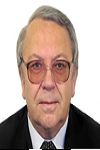
Biography:
Vladimir E. Fortov was graduated from Moscow Institute of Physics and Technology with honors. In 1976 he received a doctoral degree, in 1982 was awarded the title of professor. In 1987 he was elected as corresponding member of the Academy of Sciences of the USSR, in 1991 as full member of the Russian Academy of Sciences. He is Director of the Joint Institute for High Temperatures of RAS. From 2013 he is the President of the RAS, the Vice-chairman of the Presidential Council for Science and Education and the member of the Scientific Advisory Board of the UN Secretary-General. .
Abstract:
Dusty (complex) plasmas are plasmas containing small solid particles, typically in the micrometer range, the so-called micro particles. Dusty plasmas are specially prepared to study fundamental processes in the strong coupling regime on the most fundamental (kinetic) level, through the observation of individual micro particles and their interactions. Many interesting phenomena can be studied starting from small two-dimensional (2D) and three-dimensional (3D) clusters, to larger 2D and 3D systems where collective effects play a dominant role. In laboratory conditions, the micro particles are heavily affected by the force of gravity. Under microgravity conditions, e.g. on the International Space Station (ISS), gravity is negligible. It is possible to form dusty plasmas in the bulk region of plasmas in homogeneous large 3D systems and to investigate other phenomena than those accessible on Earth in detail. Since 2001, complex plasma research under microgravity conditions is continuously performed in Russian-German cooperation onboard the ISS with the long-term laboratories PKE-Nefedov and PK-3 Plus. The laboratory PK-3 Plus was perfectly suited for the formation of large stable liquid and crystalline systems and provided interesting insights into processes like crystallization and melting, laning and phase separation in binary mixtures, electrorheological effects due to AC electric fields and projectile interaction with a strongly coupled complex plasma cloud. Although the operation of the PK-3 Plus laboratory stopped in 2013, the promising research of large three-dimensional dusty plasmas will be continued with the next microgravity laboratory, PK-4. This was launched in October 2014 and is operational now and available for the next generation of experiments with dusty plasmas under microgravity conditions onboard the ISS.
Alexander V Bagrov
Institute of Astronomy of the Russian Academy of Science
Russia
Title: Non-rocket launch from Mars
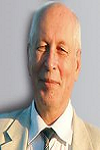
Biography:
Bagrov Alexander has completed his PhD at the age of 42 years from Odessa University (Russia) and got his Doctor of Science degree from Moscow State University. He is the Leading scientist of Institute of Astronomy of Russian Academy of Sciences and key specialist of Lavochkin Association, a premier space probes manufacturing organization. He has published more than 125 papers in reputed Russian journals and is author of 8 patents. He was awarded to title of "Honor Constructor of Space Technique".
Abstract:
Return missions to Mars (especially pilot ones) will need delivering to Mars rockets and fuel that is very expensive. We propose an elevator system for safety landing to and launch from Mars. This elevator may be based on both Martian satellites, because they are synchronized. The lifting theater being connected to a satellite will not wind it around. The far end of the elevator rope will fly over Martian surface with velocity 2 km/s or 1 km/s for Phobos and Deimos respectively. If the far end of the rope will have a hook, it can capture a loop connected to space vehicle, - just like aircraft carriers do decelerate of landing airplanes. After catching, elevator can lift spacecraft from Martian surface. To decrease hook velocity it may be installed onboard of controllable kite at far elevator's end. This will make possible to evacuate a vehicle from any point of Martian surface, not only from sub-satellite trajectory. Phobos' elevator needs 9500 km tether. It is 4 times less than it believed to be for so called "geostationary" elevator and 40 times less the length of Moon-Earth elevator. If the Martian space elevator will be constructed similarly to proposed Lunar one [Russian patent RU 121233 «Transport system "Earth-Moon"»], it will lift its cargo with acceleration, so launched spacecraft would be provided with enough velocity for returning flight to the Earth.
Anna Bodrova
Humboldt University of Berlin
Germany
Title: Size distribution of particles in Saturn’s rings from aggregation and fragmentation
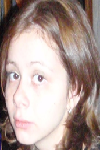
Biography:
Anna Bodrova has completed her PhD from Moscow State University. She is currently working as a Research Associate at the Humboldt University of Berlin. She has 18 publications in peer reviewed journals.
Abstract:
Saturn’s rings consist of a huge number of water ice particles, with a tiny addition of rocky material. They form a flat disk, as the result of interplay of angular momentum conservation and the steady loss of energy in dissipative interparticle collisions. For particles in the size range from a few centimeters to a few meters, a power-law distribution of radii, ∼ r−q with q≈3, has been inferred; for larger sizes, the distribution has a steep cutoff. It has been suggested that this size distribution may arise from a balance between aggregation and fragmentation of ring particles, yet neither the power-law dependence nor the upper size cutoff have been established on theoretical grounds. Here, we propose a model for the particle size distribution that quantitatively explains the observations. In accordance with data, our model predicts the exponent q to be constrained to the interval 2.75≤q≤3.5. Also an exponential cutoff for larger particle sizes establishes naturally with the cutoff radius being set by the relative frequency of aggregating and disruptive collisions. This cutoff is much smaller than the typical scale of microstructures seen in Saturn’s rings.
Mauro Mameli
University of Pisa
Italy
Title: Thermal management in space: Passive two-phase heat transfer technologies

Biography:
Mauro Mameli has completed his PhD in “Energy and Environment Technology†at the University of Bergamo. He is actually involved as a post doc in several Microgravity Application Projects funded by the European Space Agency, contributing to the development of the Experiment on Pulsating heat Pipes to be performed on the International Space Station in 2018.
Abstract:
Thermal Management systems are almost ubiquitous: they are found in electronic devices, transportation, battery cooling and households in general. The demand for higher performances, sustainability, and efficient thermal control in different acceleration environments (from hyper gravity to microgravity conditions) pushes the researchers to develop a new generation of passive two-phase flow systems. However, the development of reliable devices, calls for a thorough understanding of fundamental principles and their modelling. In the past decades, several wickless two-phase passive systems born to meet a wide range of industrial requests: indeed, such technologies, like Pulsating Heat Pipes (PHPs), have an extremely high potential in terms of simplicity and, consequently, cost effectiveness. The present lecture provide a chronicles of the hyper gravity/microgravity experimental and numerical activities carried through by the International team on Pulsating Heat Pipes in order to push the technological readiness level of such devices with particular attention to the space applications.
Safaa Mohamed Hassan
National Authority for Remote Sensing and Space Sciences
Egypt
Title: Groundwater exploration and assessments in siwa Oasis, Egypt: Using Radar, ASTER and Geophysical data
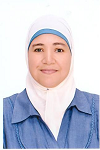
Biography:
Safaa Mohamed Hassan is an Associate professor In Remote Sensing, geology and GIS. Head of Geographic information systems division of Data Reception, Analysis and Receiving Station Affairs Division. National Authority for Remote Sensing and Space Sciences. The publications are more than 50 scientific papers in high ranked international journals.
Abstract:
The present study aims to investigate the structure; ground water exploration and assessment for the study area using radar and Landsat8 remote sensing data and geophysical data. The quantitative interpretation of the seventeen vertical electrical soundings is carried out to determine the thicknesses and true resistivity values. The final results used for construction four geoelectrical cross-sections which exhibits the six different geological units represented in the study area. The isopach maps are constructed to indicate the variation of the thicknesses of the first, second, third, fourth and fifth units through the studied area. The second layer represents the fresh water aquifer in the study area for upper Miocene age. The results of resistivity interpretation for depth, thickness and resistivity values for different layers indicated that the fresh water bearing aquifer has thickness from 5 to 85m and depth raining from 5 to 25m. The Landsat8 image has been used to study the lithological rock units and lineament analysis. In this paper Robinson-3 level edge enhancement technique was applied on the ALOS radar image to emphasize the predominant fault directions in the study area as well as detection of the buried structures and drainage systems. Two band ratios are proposed in this study (1/5, 8/9 and 4/6) and (1/3, 2/5, and 4/9) for more lithological discrimination of the study area. These studies reveal that the area was dissected by different fault elements of trends E–W, NW–SE, NE–SW and the E-W trend is mostly which control the geometry of the groundwater aquifers in the study area using the analysis of the Landsat8 and RADAR data. In the other hand we evaluate the groundwater for different uses. 39 groundwater samples were collected from the study area during 2014, and were subjected to analysis for chemical characteristics. These data has been used to preliminary evaluation of suitability of groundwater for drinking and irrigation purposes by comparing those parameters with world health organization (WHO) standards and Egyptian standards. Majority of the collected water samples are unsuitable for drinking due to its high salinity and high concentration of iron and manganese. About 82% of the studied water samples which collected from the study area had total hardness ranged between hard and very hard which unsuitable for industry. According to salinity index, SAR, Na%, magnesium hazard and Kelley ratio most of the collected groundwater samples are unsuitable for irrigation purposes.
Jaeheung Park
Korea Astronomy and Space Science Institute
Korea
Title: Plasma density irregularities in the topside ionosphere
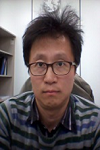
Biography:
Jaeheung Park has completed his PhD at the age of 28 years from Korea Advanced Institute of Science and Technology (KAIST) and postdoctoral studies from National Central University (NCU) in Taiwan and GeoForschungsZentrum (GFZ) in Potsdam, Germany. Now he is a scientist of Korea Astronomy and Space Science Institute (KASI).
Abstract:
Plasma density irregularities in the ionosphere can affect trans-ionospheric communication between ground facilities and satellites, and constitute an essential part of the space weather. Different latitudes and local times host different types of irregularities, such as equatorial plasma bubbles (EPBs) in nighttime low-latitude regions, medium-scale traveling ionospheric disturbances (MSTIDs) in the mid-latitude ionosphere, main trough at subauroral latitudes, and polar cap patches inside the polar cap. Low-Earth-Orbit (LEO) satellites equipped with in-situ plasma density probes or dual-band Global Navigation Satellite System (GNSS) antennae are useful for investigating these irregularities globally. In this presentation are given characteristic features of the various plasma density irregularities observed by LEO satellites, including man-made disturbance in the ionosphere. Their climatological distributions as well as concomitant deflections in electric and magnetic field are also discussed.
Giora Shaviv
Israel Institute of Technology
Israel
Title: The influence of UV radiation on exoplanets’ habitability

Biography:
Giora Shaviv is an Emeritus Professor at the Israel Institute of technology, Haifa, Israel. He held the Shwartzmann-Medvedi cjair in space sciences. He obtained his B.Sc. In 1959 from the Technion (summa cum laude), his M.Sc. in 1960 (summa cum laude), and Ph.D. in 1965 with thesis subject: fast reactor physics. He has been physics and astronomy department chair in Tel Aviv University, Dean of physics at technion, head of the Asher space research institute. Shaviv served as Vice President and President of the Israel physical Society. Shaviv was elected to the International Academy of Astronautics. His fields of interests are theoretical astrophysics, fundamental process in astrophysics, planetary atmosphere and the greenhouse effect. Shaviv published over 250 papers in the international professional literature and three popular books in Hebrew and two professional books in English.
Abstract:
High level of stellar UV radiation on a planet’s surface may prevent planet’s habitability and limit the width of the habitability zone (HZ). Hence, we wish to estimate the UV Index as a function of the stellar parameters for Earth-like planets within the HZ of main sequence stars. The stellar radiation that impinges the surface is calculated by a 1-dimensional radiative transfer model which couples the photo-chemical reactions in the atmosphere. The calculations show that the oxygen and ozone molecules provide a sufficient protection from the stellar radiation, even for hot host stars, as the UV Index can reach a maximal value of 21 units (about twice higher than on Earth). Furthermore, the UV Index is highest on planets which orbit stars with an effective temperature of about 9,000K, and is lower for hotter and colder stars.
Amotz Agnon
Hebrew University Hermann Institute of Earth Sciences
Israel
Title: SDEIGWI-Space detection of Earthquake induced ground water injection
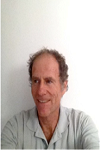
Biography:
Amotz Agnon has completed his PhD from The University of California Berkeley Division of Geophysics and was a visiting professor at Stanford University Department of Geology. He is a professor of Earth Sciences and serves as the director of The Marine Science Program and Neev Center for Geoinfomatics. He has published more than 90 papers in reputed journals and has been serving as an editor for three special publications. He is a Freund Prize recipient (Israel Geological Society) and an International Fellow of The Helmholtz Association.
Abstract:
An anomalous concentration of barium has been reported in Lake Lisan (paleo Dead Sea) sediments showing earthquake induced deformation structures (seismites). Katz et al. (2008) were inclined to reject the hypothesis that these anomalies were formed by injection of Ba-rich reduced brines from the deep crustal depths into the lake. Regardless of the source of these chemical anomalies, large destructive earthquakes are frequently associated with injection of water originating in deep aquifers into lakes. This creates an opportunity to detect these processes from space, and to search for precursory phenomena for combining in earthquake alarm programs. For the Dead Sea, one should focus on injection of solutions lighter than the surface brine. Due to the high density of the Dead Sea brine, and it overall negative precipitation- evaporation balance, this task may prove doable even for brines arriving from considerable depth. The Dead Sea surface waters are typically super saturated with respect to sodium- chloride , evidenced by the intensive precipitation of halite on ropes and any object dipped into the lake. Brines that surface due to being warmer than ambient surface water give a detectable infrared signal in the form of a hot spot. Cold spots are also detected on the surface where buoyancy is due to lower salinity. Both cases are temporally associated with small earthquakes.
Shengcheng Cui
Chinese Academy of Sciences
China
Title: A new land surface albedo model for better characterizing surface reflective properties

Biography:
Shengcheng Cui has completed his PhD in June, 2011 from the Graduate School of Chinese Academy of Sciences (and now is University of Chinese Academy of Sciences). His major research interests include the study of the surface reflective properties (SRP) model and retrieval algorithm, global statistical analysis and applications of satellite measured SRP data. At present, he is the Principal Investigators (PIs) of the AHNSF (Anhui Provincial Natural Science Foundation) and NSFC (National Natural Science Foundation of China) projects. He has published more than 20 papers in reputed journals.
Abstract:
Land surface albedo (LSA) provides a unique interface for the coupled surface-atmosphere system (CSAS). It serves as an essential analysis tool for the surface energy balance and plays an important role in various aspects involving the state and evolution of CSAS. A new LSA model was constructed to improve the characterization of the surface reflectivity properties. This model took the real angular distribution of diffuse sky irradiance field and the multiple-reflecting effect between the surface and the atmosphere into account. The model has advantage in accuracy when the sun is located higher than 50 degrees. Satellite observed surface reflectance anisotropy and albedo is strongly affected by solar illumination angles and atmospheric conditions. A parameterization of LSA was conducted and tabulated into lookup tables (LUT) with respect to two variables – solar zenith angle (SZA) and aerosol optical depth (AOD). With the developed LSA model and the parameterized LSA LUTs, it is expected that users can easily make a fast yet accurate albedo calculations after successfully inverting surface bidirectional reflectance distribution function (BRDF) model. It is promising for in-situ truth validation against satellite-derived land surface parameters products and also useful for any radiative transfer problems in the CSAS.
Dalia Nandi (Das)
West Bengal University of Technology
India
Title: Development of channel model to predict rain attenuation time series useful for satellite communication link over the world

Biography:
Dalia Nandi (Das) has completed her PhD at the age of 34 years from Calcutta University, West bengal, India. She is working as Assistant professor (senior Grade) in Electronics and communication engineering Department of Meghnad Saha Institute of Technology. She has 13 years teaching experience and 10 years research experience. She has published 5 SCI journals and 12 proceedings to her credit. She is associated with different projects funded by Indian Space Research Organization (ISRO). Her present areas of interests are satellite communications, atmospheric remote sensing and wave propagation.
Abstract:
Due to the congestion at the lower frequency bands, the satellite communication systems are now operating at the higher frequency Ku or Ka bands (Ku or Ka). However in these bands, mainly above 10 GHz, rain events cause severe attenuation to the propagating signal along earth space communication link. If time series prediction of rain attenuation during rain events is possible, fade countermeasure techniques such as adaptive control of signal power, coding and data rate can be effectively implemented to mitigate this attenuation effect. In the present study, a channel model has been developed to predict time series of rain attenuation during rain event. This model is not only tested on long term basis but also event wise. The effectiveness of the methodology is tested for different locations in the globe. The yearly cumulative distributions of measured rain rate and attenuation data for tropical and temperate locations are compared. Separate model parameters are developed for tropical and temperate regions for better prediction of rain attenuation. Temperate model parameters obtained from a temperate location are successfully used for other temperate locations. Similarly tropical model parameters obtained from a tropical location are successfully used for other tropical locations. We are now trying to develop a global model which will be applicable to all over the world for time series prediction of rain attenuation during rain events.

Biography:
Ian McDade is Professor of Space Science at York University, Toronto, Canada. He is a Chemist by background with an MA from Queens’ College, Cambridge University (1980) and a PhD from The Queen’s University of Belfast (1979). He has published many research articles in National and International Journals.
Abstract:
The three ‘W’ questions for future satellite missions are addressed: When, Where and Why. This topic is discussed in terms of the current needs of the inhabitants of planet Earth and the lessons learnt since the days of Ned Ludd. The technological developments and our new capabilities are critically assessed with Gaia in mind.
